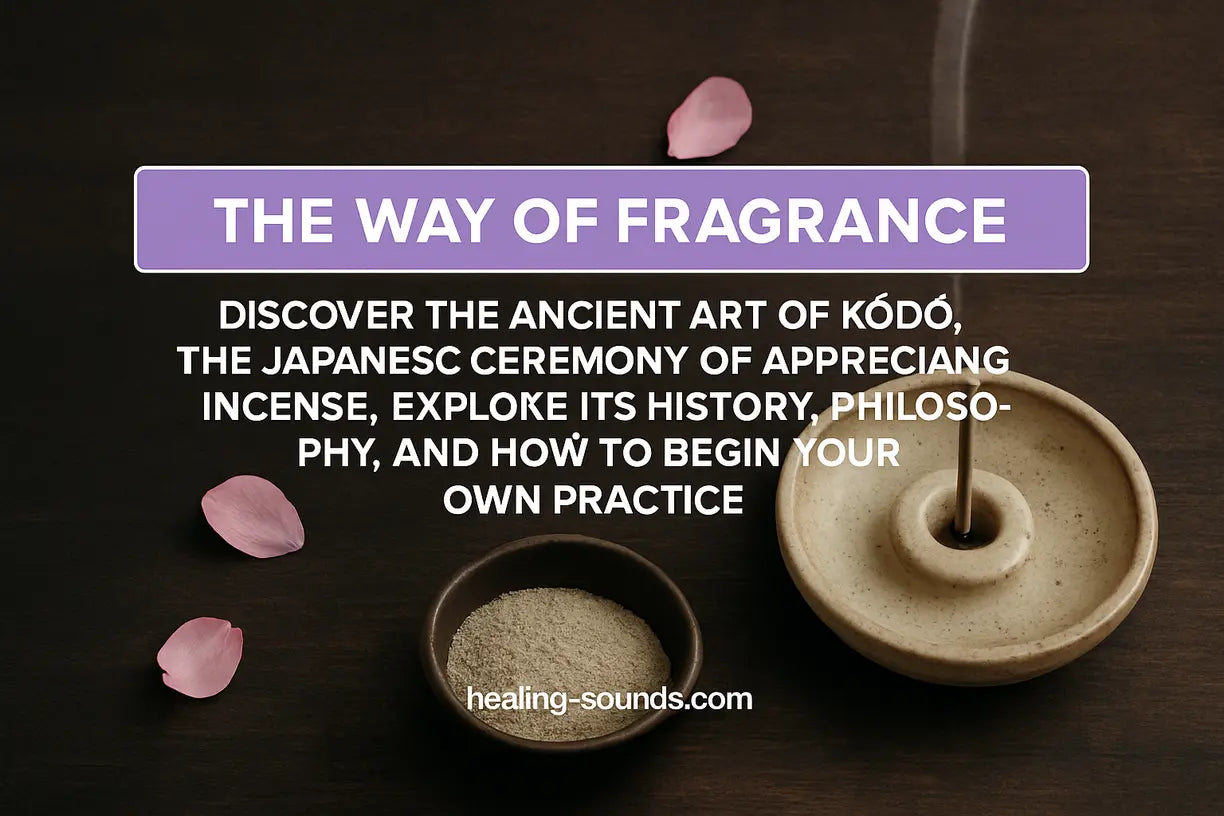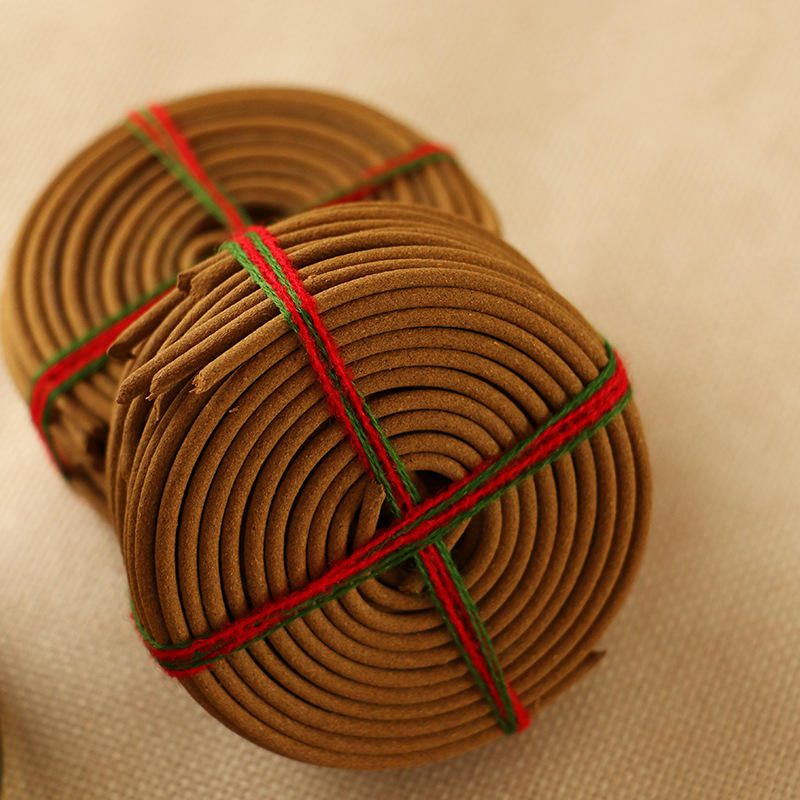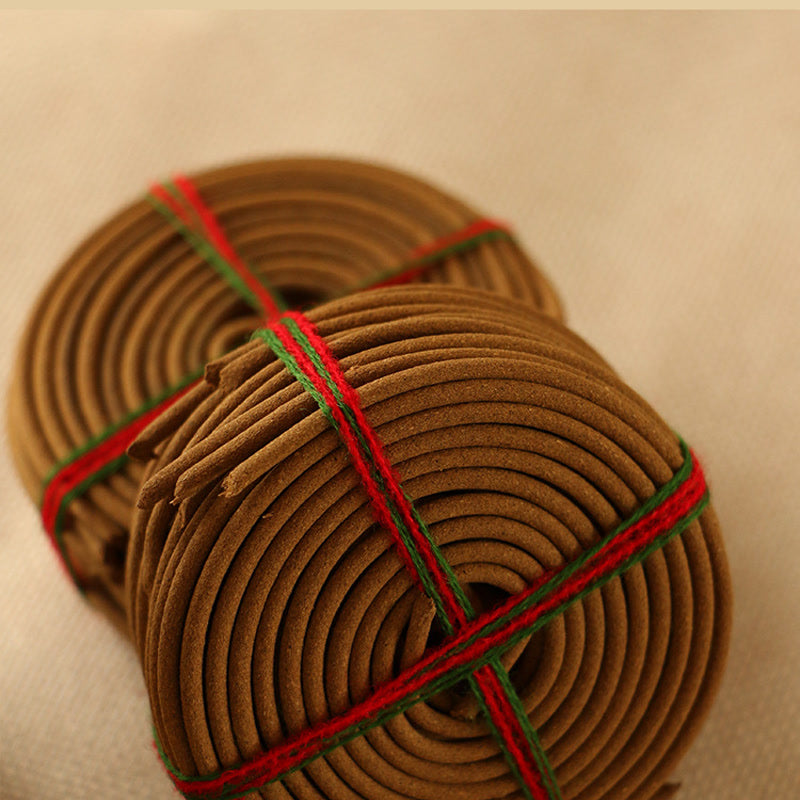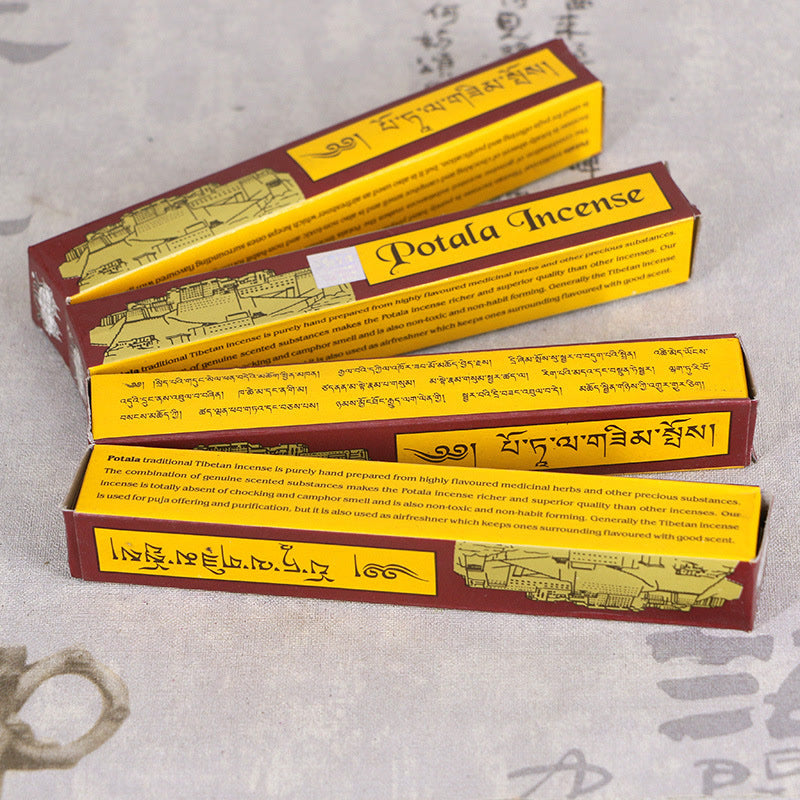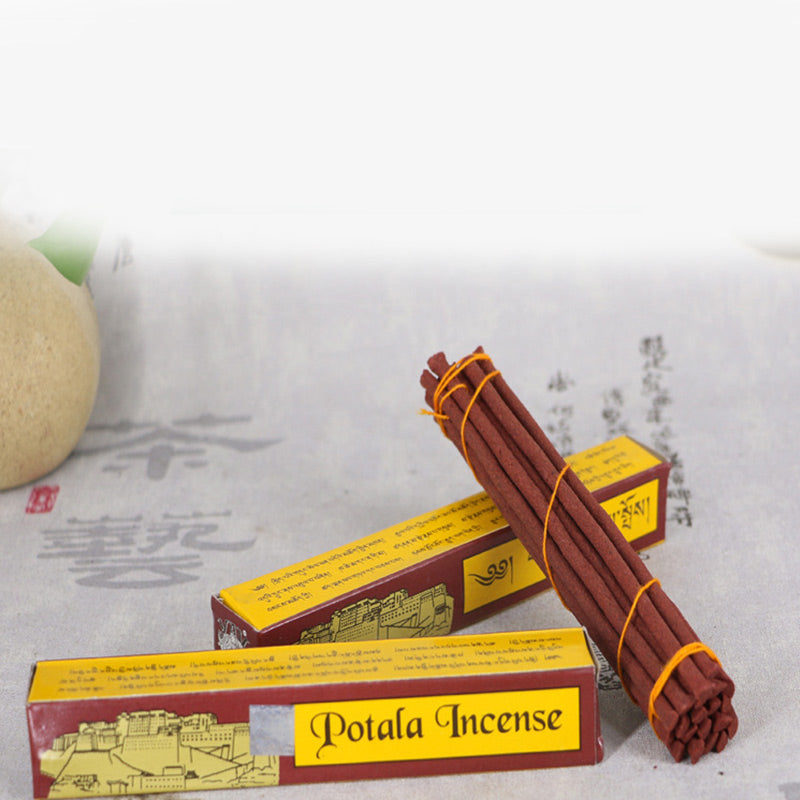Betreten Sie eine Welt, in der Düfte nicht nur gerochen, sondern auch gehört werden. Eine Welt, in der ein einfacher Rauchhauch den Geist beruhigen, einen Raum reinigen und Sie mit jahrhundertealter Tradition verbinden kann. Dies ist die Welt des japanischen Weihrauchs , einer Kunstform und spirituellen Praxis, die als Kōdō bekannt ist. Weit entfernt von den überwältigenden Düften, die Sie vielleicht gewohnt sind, bietet japanischer Weihrauch ein subtiles, raffiniertes und zutiefst achtsames Erlebnis. Er ist eine stille Einladung, innezuhalten, zu atmen und den gegenwärtigen Moment zu genießen.
Wenn Sie Ihr Zuhause gelassener gestalten oder Ihre Achtsamkeitspraxis vertiefen möchten, sind Sie hier genau richtig. Dieser Leitfaden führt Sie in die elegante Kunst des Kōdō ein, erkundet ihre reiche Geschichte, erklärt, was sie so einzigartig macht und wie Sie dieses wunderschöne Ritual ganz einfach in Ihren Alltag integrieren können. Machen Sie sich bereit und entdecken Sie, wie das einfache Anzünden eines Räucherstäbchens zu einer tiefgründigen Sinnesreise werden kann.
Was ist Kōdō: Die Kunst, „Weihrauch zu lauschen“?
In der japanischen Kultur ist Weihrauch mehr als nur ein Lufterfrischer; er ist das Herzstück einer anspruchsvollen Kunstform namens Kōdō (香道) , was übersetzt „Weg des Duftes“ bedeutet. Anders als im Westen, wo wir vom „Riechen“ eines Duftes sprechen, „hören“ die Praktizierenden des Kōdō dem Duft zu (eine Praxis namens mon-kō ). Dieser subtile sprachliche Wandel offenbart eine viel tiefere Philosophie: Es ist ein Akt achtsamer Wertschätzung, bei dem der Geist fokussiert und den nuancierten Noten der aromatischen Hölzer große Aufmerksamkeit geschenkt wird.
Kōdō gilt neben dem Blumenstecken ( Kadō ) und der Teezeremonie ( Chadō ) als eine der drei klassischen japanischen Künste der Verfeinerung. Es handelt sich um eine spirituelle Praxis mit Wurzeln im Zen-Buddhismus, die darauf abzielt, Ruhe, Achtsamkeit und die Wertschätzung der vergänglichen Schönheit des Augenblicks zu fördern. Es geht nicht darum, einen Raum mit einem starken Duft zu erfüllen, sondern eine heilige Atmosphäre für Introspektion und Frieden zu schaffen.

Eine kurze Geschichte des japanischen Weihrauchs
Die Geschichte des japanischen Weihrauchs beginnt vor über 1.400 Jahren. Aromatische Hölzer wie Adlerholz gelangten im 6. Jahrhundert mit der Einführung des Buddhismus aus China nach Japan. Ursprünglich wurde Weihrauch in religiösen Zeremonien verwendet, um Tempel zu reinigen und eine heilige Atmosphäre für Rituale zu schaffen. Seine beruhigenden und zentrierenden Eigenschaften machten ihn zu einem wesentlichen Bestandteil spiritueller Praxis.
Während der Heian-Zeit (794–1185) begannen Aristokraten am kaiserlichen Hof, Weihrauch zum ästhetischen Vergnügen zu verwenden. Sie mischten ihre eigenen Düfte und veranstalteten Weihrauch-Matching-Spiele. Später übernahmen die Samurai diese Wertschätzung für Düfte. Sie nutzten Weihrauch, um ihren Geist zu beruhigen und ihre Rüstung vor der Schlacht zu parfümieren – ein Ritual, das eine Aura der Reinheit und Furchtlosigkeit erzeugen sollte. Über Jahrhunderte entwickelten sich diese Praktiken zur hochstrukturierten und meditativen Kunst des Kōdō, die wir heute kennen.
Warum japanisches Räucherwerk wählen? Der Qualitätsunterschied
Wenn Sie bisher nur starken Rauch und aufdringliche künstliche Düfte mit Räucherwerk kannten, werden japanische Räucherwerke eine Offenbarung für Sie sein. Ihre überragende Qualität verdankt sie einigen wichtigen Merkmalen, die für ein reines, sauberes und subtiles Erlebnis sorgen.
- Subtile und nuancierte Düfte: Ziel ist nicht, Gerüche zu überdecken, sondern eine Atmosphäre zu schaffen. Düfte sind komplex, sanft und so konzipiert, dass sie aus der Nähe wahrgenommen werden können, ohne die Sinne zu überwältigen.
- Wenig Rauch: Einer der wichtigsten Unterschiede besteht darin, dass die meisten hochwertigen japanischen Räucherstäbchen keinen Bambus- oder Holzkern haben. Das bedeutet, dass nur die reinen Räucherbestandteile verbrannt werden, was zu deutlich weniger Rauch und einem reineren Duft führt.
- Hochwertige, natürliche Inhaltsstoffe: Traditionelles japanisches Räucherwerk basiert auf hochwertigen, natürlichen Materialien wie Sandelholz, Adlerholz, Harzen und Gewürzen. Renommierte Marken wie Shoyeido und Nippon Kodo haben ihre Mischtechniken über Jahrhunderte perfektioniert und gewährleisten so ein Produkt von außergewöhnlicher Reinheit.

Die Kerndüfte Japans: Erkundung der wichtigsten Zutaten
Die Welt des japanischen Weihrauchs basiert auf kostbaren aromatischen Hölzern, die seit Jahrhunderten geschätzt werden. Das Verständnis dieser Hauptbestandteile ist der erste Schritt zur Wahl eines Duftes, der Ihnen gefällt.
Sandelholz (Byakudan)
Sandelholz ist vielleicht der bekannteste und grundlegendste Duft japanischer Räucherstäbchen. Bekannt für sein warmes, cremiges und süß-holziges Aroma, hat es eine wunderbar erdende und beruhigende Wirkung . Es wird oft in der Meditation verwendet, um den Geist zu fokussieren und ein Gefühl innerer Ruhe zu fördern. Sein sanfter Duft macht es zu einem hervorragenden Einstieg für alle, die neu im Kōdō sind.
Tibetische Sandelholz-Reinigungsstäbchen für die Meditation
$38.90 $55.90
Verbessern Sie Ihre Kōdō-Praxis mit dem erdenden Aroma dieser authentischen tibetischen Räucherstäbchen aus Sandelholz zur Reinigung.
Produkt entdeckenAdlerholz (Jinkō)
Adlerholz, auch als Jinkō oder „sinkendes Holz“ bekannt, ist die wertvollste und am meisten verehrte Zutat im Kōdō. Es ist ein unglaublich seltenes, harziges Kernholz, das in Adlerholzbäumen entsteht, wenn diese mit einer bestimmten Schimmelart infiziert werden. Der Duft ist ungemein komplex, mit Noten, die als tief, reich, erdig und leicht süßlich beschrieben werden können. Laut dem Royal Botanic Gardens in Kew ist es aufgrund seiner Seltenheit einer der teuersten Rohstoffe der Welt. Im Kōdō wird Adlerholz für tiefe Meditation und besondere Anlässe verwendet, da man glaubt, dass es Klarheit und spirituelles Erwachen fördert .
Andere häufige Zutaten
Über diese beiden Säulen hinaus mischen Räuchermeister weitere natürliche Zutaten hinzu, um einzigartige und harmonische Düfte zu kreieren. Oftmals finden sich Noten von Zimt, Nelke, Benzoe (einem süßen Harz), Sternanis und verschiedenen Kräutern, die dem endgültigen Duftprofil jeweils eine weitere Ebene der Komplexität verleihen.
[Sammlungs-Schieberegler]
So beginnen Sie Ihre Kōdō-Reise: Ein einfaches Ritual
Sie müssen kein Kōdō-Meister sein, um die wohltuende Wirkung japanischen Weihrauchs zu genießen. Die Integration in Ihr Leben kann ganz einfach durch ein kleines, achtsames Ritual erfolgen. Der Fokus liegt auf Intention und Präsenz.
- Bereiten Sie Ihren Raum vor: Wählen Sie einen ruhigen, sauberen Ort, an dem Sie nicht gestört werden. Öffnen Sie gegebenenfalls kurz ein Fenster, um für eine sanfte Luftzirkulation zu sorgen.
- Wählen Sie Ihr Räucherstäbchen: Wählen Sie ein Räucherstäbchen, das Ihnen gefällt. Halten Sie es einen Moment lang in der Hand und genießen Sie seine zarte Form.
- Zünden Sie das Räucherstäbchen an: Halten Sie die Spitze des Räucherstäbchens mit einem Streichholz oder Feuerzeug in die Flamme, bis ein kleines Glühen erscheint.
- Flamme löschen: Lassen Sie die Flamme einige Sekunden brennen und schwenken Sie dann den Stab vorsichtig in der Luft oder fächeln Sie ihn mit der Hand an, bis die Flamme erlischt und nur noch eine glühende Glut und eine dünne Rauchfahne zurückbleibt. Pusten Sie niemals darauf , da dies in der japanischen Tradition als unhöflich gilt.
- In einen Halter legen: Legen Sie das Räucherstäbchen in einen geeigneten, feuerfesten japanischen Räucherstäbchenhalter . Dies ist wichtig für die Sicherheit und zum Auffangen der Asche.
- Genießen Sie den Moment: Setzen Sie sich ruhig hin und lauschen Sie dem Duft, während er sich entfaltet. Achten Sie auf die subtilen Veränderungen im Aroma. Lassen Sie den Duft Ihren Geist beruhigen und Sie in die Gegenwart bringen.

Die Qualität Ihres Erlebnisses wird durch die von Ihnen verwendeten Werkzeuge verbessert. Ein schöner, gut verarbeiteter Brenner dient nicht nur einem praktischen Zweck, sondern trägt auch zum ästhetischen und rituellen Vergnügen der Praxis bei.
Verbessern Sie Ihre Praxis mit diesen Tools
$55.90
$79.90
Dieses minimalistische Räuchergefäß aus Keramik bietet die perfekte Ästhetik, um die subtilen Düfte japanischer Räucherstäbchen zu genießen. Mehr erfahren ➔
$19.90
$28.90
Entdecken Sie mit diesen natürlichen Stäbchen die seltenen, beruhigenden Noten von Adlerholz, einem Schlüsselelement traditioneller japanischer Räucherstäbchen. Mehr erfahren ➔
Abschluss
Japanisches Räucherwerk ist weit mehr als nur ein einfacher Raumduft; es öffnet den Weg zu einem achtsameren und gelasseneren Leben. Die alte Kunst des Kōdō lehrt uns, langsamer zu werden, aufmerksam zu sein und die Schönheit der Feinheiten des Duftes zu entdecken. Indem Sie diese Tradition pflegen, verwandeln Sie Ihren Raum in eine Oase der Ruhe und Ihren Alltag in einen Moment tiefer Ruhe.
Wir laden Sie ein, Ihren eigenen „Weg der Düfte“ zu beginnen. Entdecken Sie unsere sorgfältig zusammengestellte Sammlung authentischer Räucherstäbchen und handgefertigter Räuchergefäße und finden Sie die perfekten Begleiter für Ihre Reise in die beruhigende Welt japanischer Räucherstäbchen.
Häufig gestellte Fragen zu japanischem Weihrauch
Japanisches Räucherwerk heißt „koh“ (香) . Die Kunstform und Zeremonie, die mit seiner Würdigung verbunden ist, heißt „Kōdō“ (香道) , was übersetzt „Weg des Duftes“ bedeutet.
Der Zweck japanischen Weihrauchs ist vielfältig. Er wird zur spirituellen Reinigung in Tempeln verwendet, als Mittel zur Achtsamkeit und Meditation , zur Entspannung und zum Stressabbau sowie als ästhetische Praxis, um zu Hause eine heitere und angenehme Atmosphäre zu schaffen.
Die beliebtesten und traditionellsten Räucherzutaten in Japan sind Sandelholz (Byakudan) und Adlerholz (Jinkō) . Sandelholz ist wegen seines beruhigenden, warmen Duftes sehr beliebt und wird häufig im Alltag verwendet, während das seltene und komplexe Adlerholz für Meditation und besondere Anlässe hoch geschätzt wird.
Um ein japanisches Räucherstäbchen zu verwenden, zünden Sie die Spitze mit einem Streichholz oder Feuerzeug an. Lassen Sie die Flamme einige Sekunden brennen und fächern Sie sie dann vorsichtig auf, sodass eine glühende rote Glut zurückbleibt. Legen Sie das Stäbchen in einen speziellen, nicht brennbaren Räucherstäbchenhalter, der die Asche auffängt.
Viele halten japanisches Räucherwerk aufgrund seiner hohen Qualität und Raffinesse für „besser“. Zu den Hauptgründen zählen die Verwendung rein natürlicher Inhaltsstoffe , das Fehlen eines Holzkerns, wodurch nur sehr wenig Rauch entsteht, und die subtilen, nuancierten Düfte, die eher zum bewussten Genießen gedacht sind, als einen Raum zu überwältigen.

